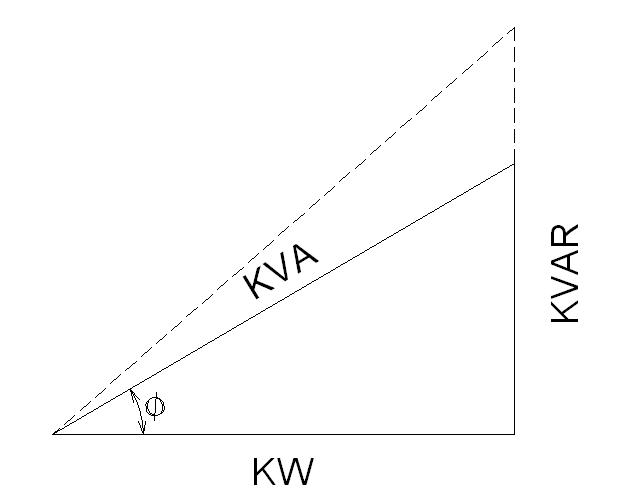There are so many ways to increase power system energy efficiency. The use of energy-efficient motors, variable speed drives, or energy-efficient lighting is the method to increase power system efficiency. These methods of course require the replacement of existing equipment.
The simplest and personally, I believe to be the least expensive method to become energy efficient is Power Factor Correction. A 10% increase in power factor reduces system losses by 12%. This means that any investment in power factor correction, regardless of whether power utilities provide incentives on not, will be recovered in a few years through the reduction of energy billing.


From the above diagrams, increasing the power factor (cos Φ), reduces the total system KVA with the same KW of load. The reduction means that the system I2R will be lower, reducing system losses and increasing system energy efficiency.
Assuming a low voltage motor control center supplying a group of motors with a total load of 400 kW, 400V 3Φ at 0.76 power factor lagging. The cable length supplying the motor control center is 60 meters. The cables used in this instance is 5 runs of 400 mm² cable with impedance of 0.52 + j0.07 Ω/km per run or 0.00624 +j0.00084 Ω for the 5 runs of cables.
From the above, we can calculate the cable losses, assuming that the motors operate for 24 hours, 300 days a year. The power dissipated on the cable is 3.6kW or equivalent to 26,000 kWh per year.
| PF | Losses per year (kWh) | % Reduction in Losses |
|---|---|---|
| 0.76 | 26,000 | 0% |
| 0.84 | 21,400 | 17% |
| 0.92 | 17,7000 | 32% |
It is apparent that increasing the power factor can significantly reduce power system losses leading to an increase in system efficiency.
In addition to the above loss reduction, some utility companies provide discounts on system power factors above 0.85.

Comments are closed.